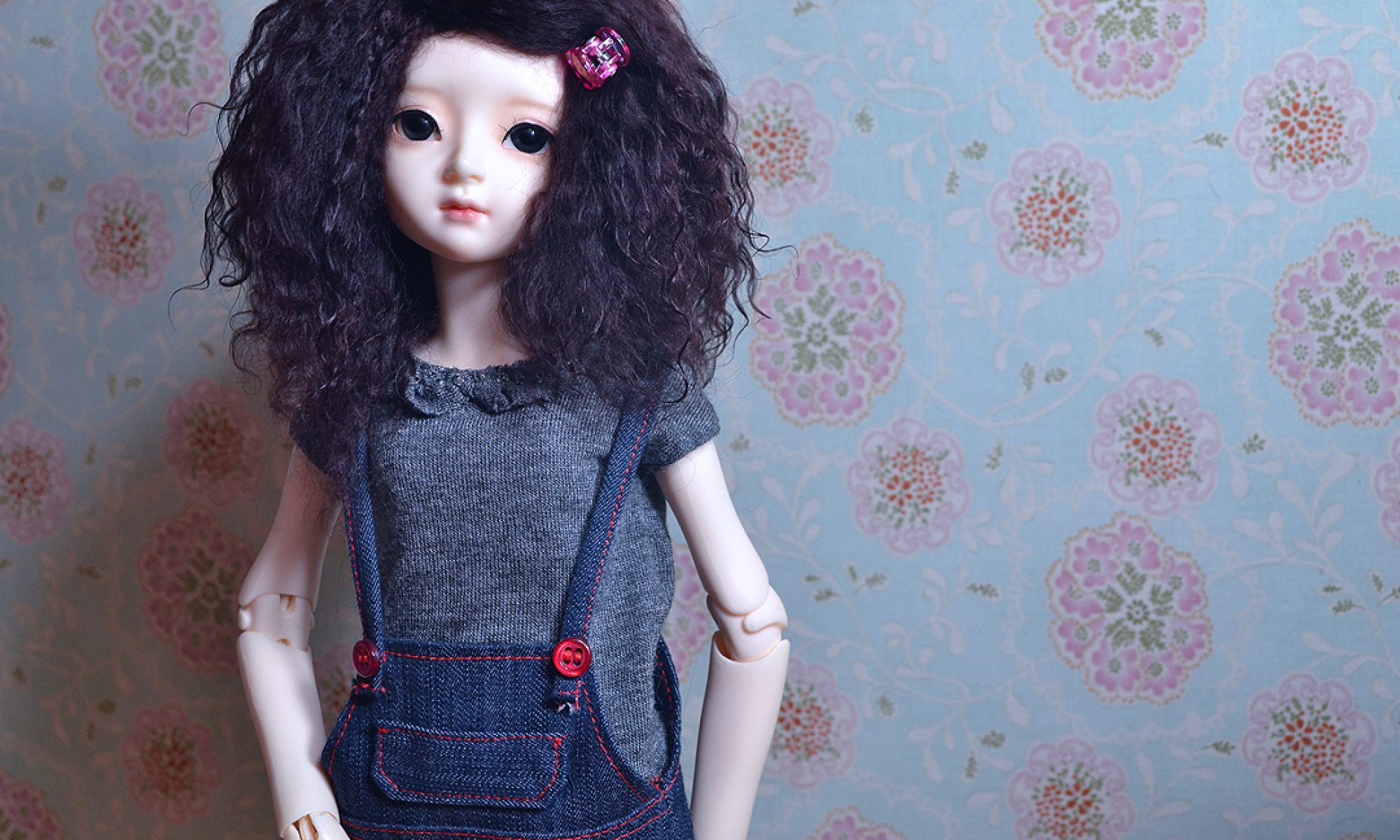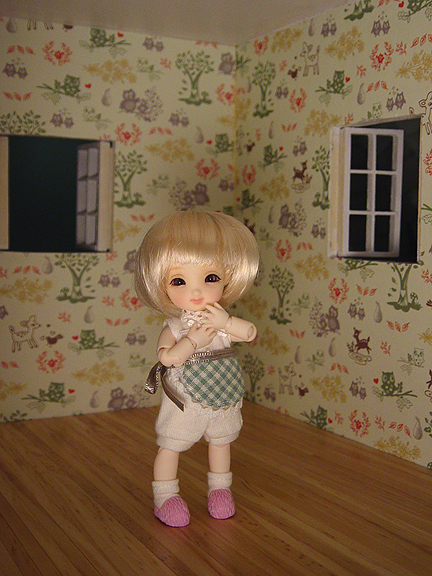The picture is a little dark because I just took the photo tonight after I finished papering the kitchen, but there it is, I finally got my favorite woodland paper on the walls! This is also the first time my little Brownie has been near the house as well. Anyway I still have all of the trim-work to do, and of course I need to make kitchen cabinets and such, but I am happy with how things are coming together. I’ve also made some progress on the bathroom, as well as the big bedroom upstairs.
So, I thought I would go ahead and share some advice on wallpapering dollhouses, since it gave me so much grief earlier and I went through a lot of trial and error. First of all, I want to say that I got the best advice from the people at the CDHM forums, which is a nice little miniatures/dollhouse site. It would really pay to go check out the site as there is a lot of good information there overall in regards to miniatures. Here is the link: http://www.cdhm.org/
OK, so after trying Modpodge, Elmers Glue, wood glue and Tacky Glue, I have to say that really there is nothing that is going o work better than wallpaper paste. It will really save you a lot of grief and ruined paper if you just bite the bullet and buy some wallpaper paste. Of course you won’t need the giant buckets of the stuff they sell in the hardware store, but you should be able to find a nice sized tub of wallpaper border paste for a reasonable price. I guess they do make wallpaper paste specifically for dollhouses, but you wind up paying an awful lot for a small bottle of it, while for about the same price you can get 6 times as much of the regular paste.
The second key factor I think is important to successful wallpapering is to achieve a nice even coat of paste on your paper. To do this, probably the best thing you can do is to take an inexpensive foam paintbrush and use it to brush the paste onto the back of the paper. Spread it evenly and be generous, but don’t slather it on there. It’s easy to get a nice even coat if you lay your paper down on some wax paper, this way you can brush clean off the edges of the paper so everything gets fully covered. As it is, paper expands a little when it becomes wet and retracts a little when it dries. If you have uneven coverage then different parts of the paper will expand and contract at different rates and thus create bubbles, buckling and creasing.
The third key factor now is to apply your paste to your paper, then apply the paper to the wall, rather than applying glues or pastes to the wall and then adding the paper. It seems like it would be easier to just add dry paper to the paste covered walls, but like I said earlier, you need an even coating and saturation of your paper. While the paper is still damp, it’s pretty easy to slide the paper into place, and you can use a credit card or your fingers to smooth down any bubbles that may get caught as you lay down the paper. The tricky part comes when you are papering over a window. Usually what I do is to just paper over the entire wall and then cut out the paper over the window after it dries. This is easier than trying to perfectly cut and match a window hole, plus you will place trim around the interior of the window later so you don’t need to be perfect. Anyway the point I mean to make is that the paper likes to ripple a little around the windows, but as long as you make certain that the paper is laying flat all around the window, as the paper dries everything will get pulled taught and straight…in fact you can play the bongos on them if you want to, lol.
So those are my tips for having a successful wallpapering session. I hope everyone building a house can go out and get themselves some super cute paper to put in their houses!

